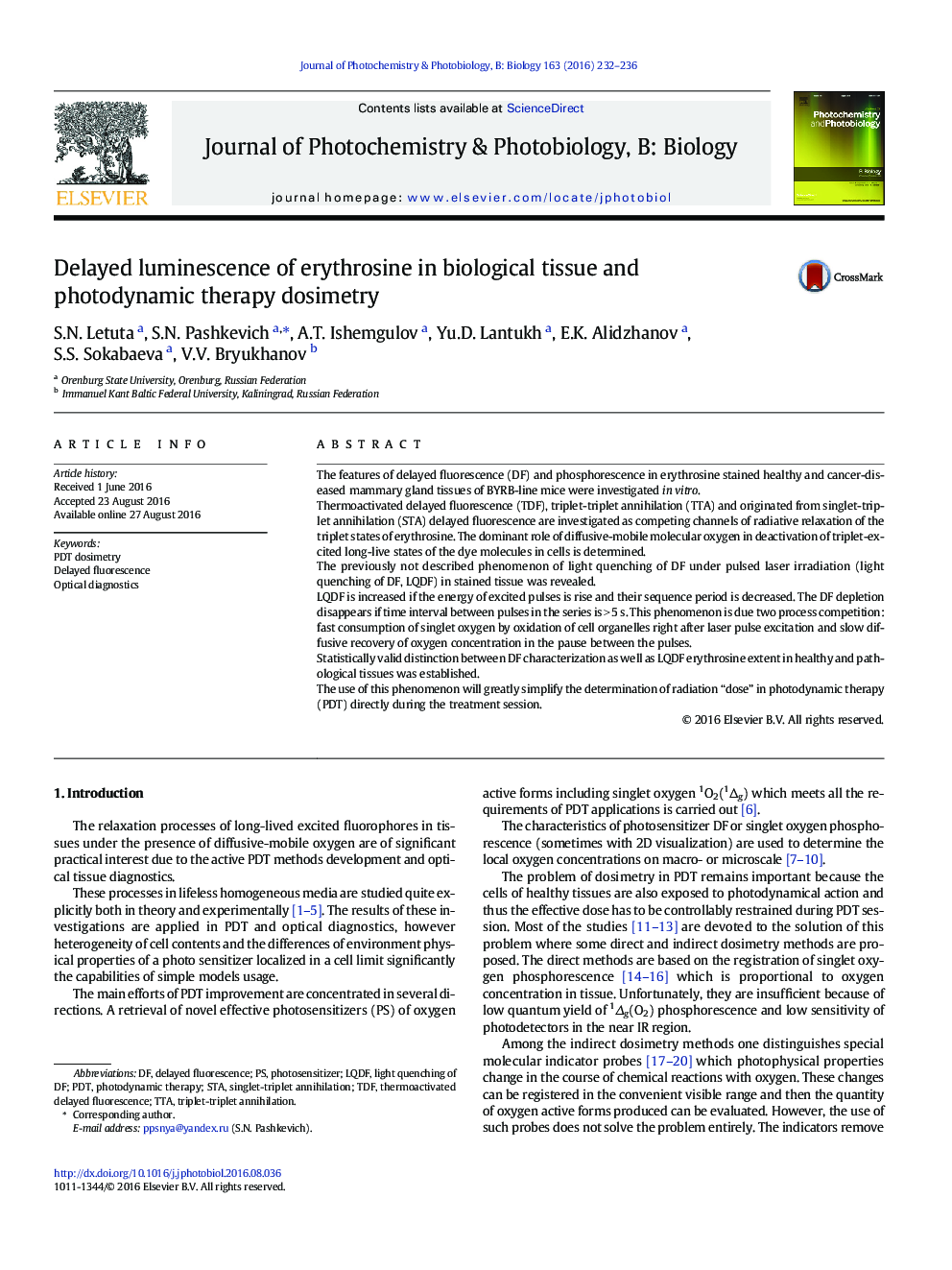| Article ID | Journal | Published Year | Pages | File Type |
|---|---|---|---|---|
| 4754669 | Journal of Photochemistry and Photobiology B: Biology | 2016 | 5 Pages |
â¢Oxygen has decisive role in quenching of triplet states of erythrosine in the tissues.â¢Delayed fluorescence of erythrosine in tissues may be suppressed by pulsed excitation.â¢Suppression of delayed fluorescence of erythrosine mainly occurs in tumor tissues.
The features of delayed fluorescence (DF) and phosphorescence in erythrosine stained healthy and cancer-diseased mammary gland tissues of BYRB-line mice were investigated in vitro.Thermoactivated delayed fluorescence (TDF), triplet-triplet annihilation (TTA) and originated from singlet-triplet annihilation (STA) delayed fluorescence are investigated as competing channels of radiative relaxation of the triplet states of erythrosine. The dominant role of diffusive-mobile molecular oxygen in deactivation of triplet-excited long-live states of the dye molecules in cells is determined.The previously not described phenomenon of light quenching of DF under pulsed laser irradiation (light quenching of DF, LQDF) in stained tissue was revealed.LQDF is increased if the energy of excited pulses is rise and their sequence period is decreased. The DF depletion disappears if time interval between pulses in the series is >Â 5Â s. This phenomenon is due two process competition: fast consumption of singlet oxygen by oxidation of cell organelles right after laser pulse excitation and slow diffusive recovery of oxygen concentration in the pause between the pulses.Statistically valid distinction between DF characterization as well as LQDF erythrosine extent in healthy and pathological tissues was established.The use of this phenomenon will greatly simplify the determination of radiation “dose” in photodynamic therapy (PDT) directly during the treatment session.
